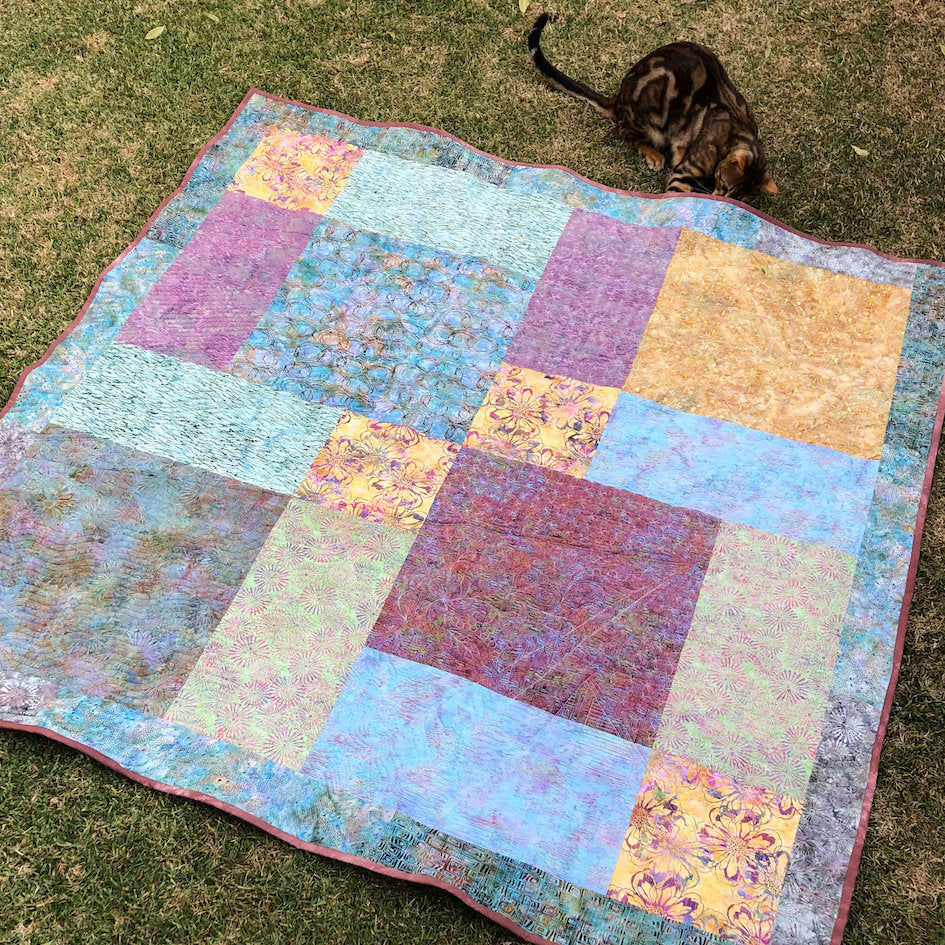
What is Quilting? A Beginner’s Guide to Quilting Techniques, History, and More
Share
Quilting is an art form that combines creativity, craftsmanship, and tradition. Whether you’re new to the craft or an experienced quilter, understanding what quilting is and the various techniques involved can help you enhance your skills and appreciation for this timeless craft. In this guide, we’ll explore the basics of quilting, its rich history, popular quilting techniques, and why this craft is so beloved.
At its core, quilting is the process of stitching together layers of fabric to create a durable and functional textile. Typically, a quilt consists of three layers:
- Top layer: This is the quilt's design, often pieced together from different fabrics, including patches, appliqué, or other decorative elements.
- Batting layer: A soft filling, usually made from cotton, wool, or synthetic fibers, which provides warmth and thickness to the quilt.
- Back layer: The fabric that covers the back of the quilt, which can be a solid color or patterned fabric.
Quilting can be done by hand or machine, and the quilted layers are stitched together with creative patterns or designs to hold everything in place.

A Brief History of Quilting
Quilting is a craft with roots in ancient civilizations. The earliest examples of quilts have been discovered in Egyptian tombs, and quilting techniques were practiced by Chinese and Roman cultures as far back as the 4th century. However, quilting as we know it became widespread in Europe and the United States during the 18th and 19th centuries.
In America, quilts became an integral part of daily life, offering both warmth and creative expression. During the Great Depression, women used leftover fabrics from old clothes and household items to create quilts, which were both practical and artistic. Over the years, quilting evolved into a beloved hobby, and today, modern quilters use a variety of tools, fabrics, and techniques to create beautiful quilts that reflect their personal styles.
Popular Quilting Techniques
There are many different quilting techniques that quilters use to create intricate and beautiful designs. Here are some of the most popular quilting methods:
Patchwork Quilting
Patchwork quilting is the traditional method of stitching together fabric pieces to form a design. The pieces are typically sewn into squares, triangles, or other shapes and arranged to create patterns like log cabins, stars, or other classic quilt motifs.
Read more about making your first quilt in this blog post.

Appliqué Quilting
Appliqué involves sewing smaller pieces of fabric onto a larger background fabric to create intricate designs. This technique is often used to add shapes, images, or detailed patterns to a quilt.

Foundation Paper Piecing (FPP)
Foundation Paper Piecing is a technique where paper is used as a guide to sew fabric pieces onto. This allows for precise piecing, making it perfect for creating intricate designs like stars or geometric patterns. Read more about this technique in this blog post.
Machine Quilting
Machine quilting is the process of using a sewing machine to stitch the quilt layers together. It’s faster than hand quilting and allows quilters to experiment with different designs, such as stippling, straight-line quilting, or free-motion quilting.

Why Start Quilting?
Quilting is more than just a hobby—it’s a creative outlet that provides relaxation, mental stimulation, and a sense of accomplishment. Many quilters find that the act of stitching, choosing fabrics, and designing patterns is therapeutic. Quilting can also be a social activity, with quilting bees or local quilt groups providing opportunities for community and connection.
Starting quilting can be a rewarding experience for anyone, regardless of skill level. It’s a craft that allows you to experiment with colours, patterns, and techniques, creating something truly unique and meaningful.
Quilting is a versatile and enjoyable craft that has a rich history and continues to evolve today. Whether you’re making quilts to keep warm, as gifts, or as a form of self-expression, there are countless techniques and styles to explore. By learning the basics of quilting and experimenting with different methods, you can create beautiful, functional quilts that will last for years to come.
Start quilting today, and discover the joy that comes with each stitch.

